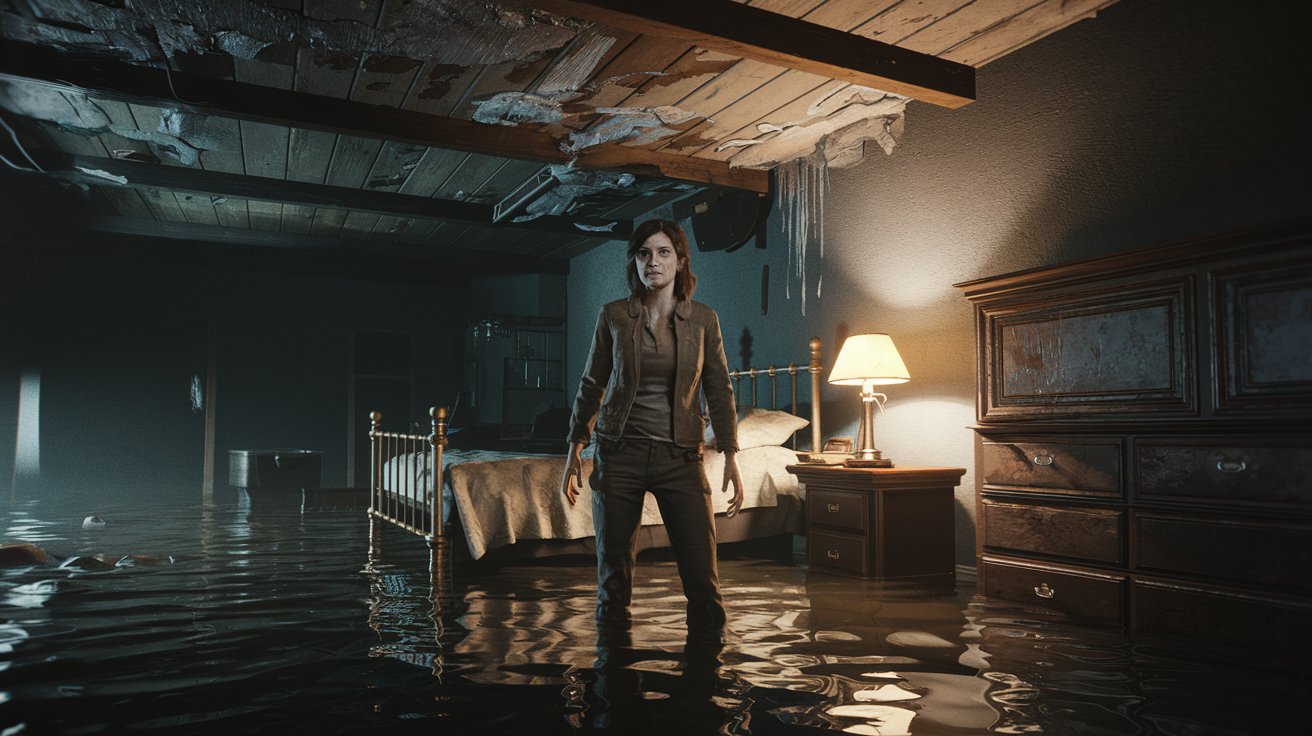In the dimly lit world of horror adventure games, your wits are often your only weapon. Whether you’re navigating abandoned asylums or fleeing from otherworldly entities, mastering the art of survival is essential. This comprehensive guide will equip you with the strategies and mindset needed to overcome even the most terrifying gaming experiences.
Understanding the Horror Adventure Genre
Horror adventure games blend storytelling, exploration, and problem-solving with elements designed to terrify. Unlike action-horror games that arm you with weapons, many horror adventures focus on vulnerability, forcing players to hide, run, or outsmart their enemies rather than confront them directly.
The genre has evolved significantly since the early days of titles like “Alone in the Dark” (1992). Today’s horror adventures incorporate sophisticated psychological elements, environmental storytelling, and immersive audio design to create experiences that challenge not just your gaming skills but your courage.
What makes horror adventure games particularly challenging is their unpredictability. Developers deliberately keep players off-balance through:
- Limited resources: Scarce ammunition, healing items, or save points
- Restricted visibility: Dark environments that hide threats
- Disempowerment: Few defensive options against powerful enemies
- Psychological manipulation: Using tension, false scares, and narrative twists
Understanding these mechanics is your first step toward survival. The most successful horror game players recognize that these games operate on different rules than traditional adventures—caution often trumps courage, and patience frequently outweighs speed.
Essential Survival Tips for Any Horror Game

Whether you’re playing “Amnesia,” “Outlast,” or the latest indie horror sensation, certain survival principles remain universal:
1. Master Environmental Awareness
Your surroundings contain both threats and salvation. Train yourself to:
- Scan constantly: Develop the habit of checking corners, ceilings, and behind you
- Learn sound cues: Different enemy types often have distinctive audio signatures
- Map mentally: Remember escape routes and safe zones as you explore
- Notice patterns: Many horror games telegraph threats through subtle environmental changes
2. Embrace the Stealth Approach
In most horror adventures, direct confrontation is a last resort. Instead:
- Stay low and slow: Crouching reduces visibility and noise
- Use distractions: Throwing objects can divert enemies
- Learn enemy patrol patterns: Most AI follows predictable routes
- Utilize cover effectively: Break line of sight when pursued
3. Prioritize Objectives
Panic leads to poor decisions. Stay focused on your goals:
- Understand primary objectives: Know exactly what you need to accomplish
- Break tasks into manageable steps: “Find key, unlock door, reach safe room”
- Don’t get sidetracked: Optional areas may contain resources but increase exposure to danger
- Consider the risk/reward ratio: Is that shiny collectible worth facing what guards it?
4. Save Strategically
In games with limited saves or checkpoints:
- Never waste a save point: Especially after significant progress
- Save before risky maneuvers: Attempting to sneak past multiple enemies? Save first
- Keep multiple save files: Rotate between at least three saves to avoid dead-end situations
Resource Management: The Key to Staying Alive
Horror games are exercises in scarcity. Effective resource management often determines survival:
Inventory Optimization
- Know what to keep: Understand which items are essential vs. situational
- Combine items when possible: Many games allow crafting to save space
- Discard strategically: Sometimes dropping less critical items makes room for necessities
- Anticipate needs: Keep healing items accessible for emergencies
Energy Conservation
Your character’s stamina is a crucial resource:
- Sprint only when necessary: Exhaustion at the wrong moment can be fatal
- Use hiding spots to recover: Many games allow stamina regeneration while concealed
- Pace yourself: Long sections may require stamina management throughout
Light Management
In games with limited light sources (flashlights, matches, lanterns):
- Use light judiciously: Only when navigation is impossible without it
- Switch off when not needed: Conserve batteries and reduce visibility to enemies
- Seek alternative light sources: Environmental lighting often provides safer illumination
- Time reloads/battery changes: Never replace batteries while exposed
Psychological Tactics: Overcoming Fear
The greatest obstacle in horror games is often your own fear response:
Managing Real-World Anxiety
- Control your environment: Play in a well-lit room to reduce immersion if too intense
- Use the pause button: Take breaks during particularly stressful sequences
- Breathe methodically: Combat physical stress responses with deep breathing
- Desensitization: Exposure gradually reduces fear reactions
In-Game Psychology
- Anticipate jump scares: Developers place these at predictable points—before/after key items, at ends of corridors, after prolonged quiet
- Recognize false tension: Games often build atmosphere without actual threats
- Name your fear: Identifying exactly what’s threatening you reduces its psychological impact
- Embrace failure: Death is inevitable; seeing it as a learning tool reduces its emotional weight
Navigating Different Horror Subgenres
Different horror subgenres require adjusted approaches:
Survival Horror (Resident Evil, The Evil Within)
- Ammo conservation is critical: Aim for vulnerable points
- Know when to run: Not every enemy needs to be defeated
- Master quick-turns: Escape mechanics are vital
- Learn enemy weaknesses: Exploit specific vulnerabilities
Psychological Horror (Layers of Fear, SOMA)
- Pay attention to narrative clues: Solutions often lie in the storytelling
- Question your perceptions: The environment may change when not observed
- Focus on puzzles: Combat is usually minimal; mental challenges predominate
- Analyze symbolism: Visual motifs often provide hints
Hide-and-Seek Horror (Outlast, Alien: Isolation)
- Map hiding spots: Know where to conceal yourself in every area
- Observe enemy patterns: Learn prediction and timing
- Use sound masking: Environmental noise can cover your movements
- Develop patience: Rushing leads to detection
Cosmic/Eldritch Horror (Bloodborne, Call of Cthulhu)
- Accept limited understanding: These games intentionally keep players confused
- Track sanity/insight mechanics: Mental state often affects gameplay
- Look for environmental storytelling: Lore is crucial for progression
- Prepare for non-human logic: Puzzles may follow alien reasoning
Advanced Strategies for Veteran Players
For those seeking to master the genre:
Speed Management
- Walking is underrated: It’s quieter and allows better observation
- Calculate risk windows: How long does it take to cross dangerous areas?
- Perfect timing: Learn enemy movement cycles to the second
- Master “leaning”: Many games allow peeking without exposing yourself
Manipulating AI Behavior
- Understand detection systems: Different games use various sensory models (sight, sound, smell)
- Test boundaries: Deliberately trigger reactions to learn response patterns
- Create diversion chains: Lead enemies away systematically
- Exploit AI limitations: Many horror game enemies have predictable behavior when losing track of you
Stress Testing
- Deliberately explore: Knowing map boundaries reduces uncertainty
- Trigger events in controlled conditions: Spring traps when prepared
- Practice worst-case scenarios: How quickly can you escape when discovered?
- Learn to “kite” enemies: Leading pursuers in circles while accomplishing objectives
When All Else Fails: Learning from Death
Death in horror games provides valuable information:
- Analyze failure points: What specific action led to detection?
- Observe kill animations: They often reveal enemy vulnerabilities
- Note environmental hazards: What wasn’t immediately obvious?
- Reconsider your approach: If stealth isn’t working, perhaps distraction is better
Treat each death as reconnaissance, collecting crucial intelligence for your next attempt.
The Most Challenging Horror Games and How to Beat Them
Alien: Isolation
Core Challenge: The Xenomorph’s adaptive AI learns from your tactics.
Survival Strategy:
- Never hide in the same place twice
- The motion tracker betrays your position—use it sparingly
- Craft noisemakers to create distant distractions
- Vents are double-edged swords: escape routes but also the alien’s domain
Outlast Series
Core Challenge: Complete vulnerability with no combat options.
Survival Strategy:
- The camcorder’s night vision is essential but drains batteries—toggle it
- Close doors behind you to slow pursuers
- Hide before you’re spotted, not after
- Use corners and obstacles to break line of sight
Amnesia Series
Core Challenge: Sanity management while solving complex puzzles.
Survival Strategy:
- Darkness decreases sanity but reveals your position less—balance is key
- Looking directly at monsters accelerates sanity loss
- Water attracts certain enemies—avoid splashing
- Focus on progress rather than exploration to maintain sanity
Visage
Core Challenge: Complex, interconnected house with shifting realities.
Survival Strategy:
- Light sources are critical—keep multiple types available
- Complete chapters in the optimal order (Sara → Dolores → Rakan)
- Pills restore sanity but are scarce—use when under 30%
- Memorize the house layout as it remains consistent despite reality shifts
Conclusion
Horror adventure games offer some of gaming’s most intense and memorable experiences. By mastering environmental awareness, resource management, and psychological resilience, you transform from helpless prey into a calculated survivor.
Remember that these games are designed to be challenging—their tension comes from balancing on the edge between helplessness and hope. Every small victory against the darkness is meaningful precisely because success isn’t guaranteed.
The next time you find yourself hiding in a locker while an unstoppable entity searches nearby, remember these strategies. With practice, patience, and persistence, you’ll discover that even the most terrifying gaming challenges can be overcome.
Now turn off the lights, put on your headphones, and step into the darkness—you’re ready to face whatever awaits.
What’s your favorite horror adventure game, and which survival technique has saved you most often? Share your experiences in the comments below!

Zareb Saleh is a journalist at Gulf Today and a ghostwriter for Gameoholic, specializing in gaming, technology, and digital culture. With a keen eye for industry trends, he delivers insightful stories that engage and inform readers.




